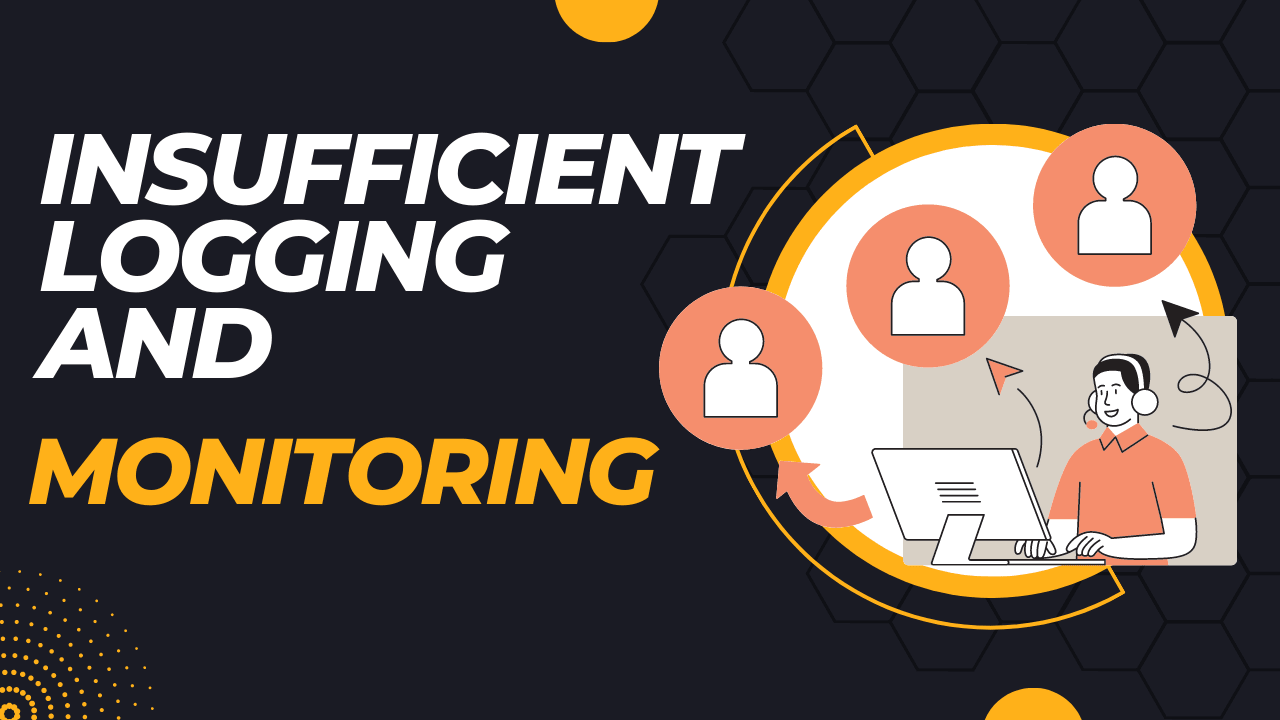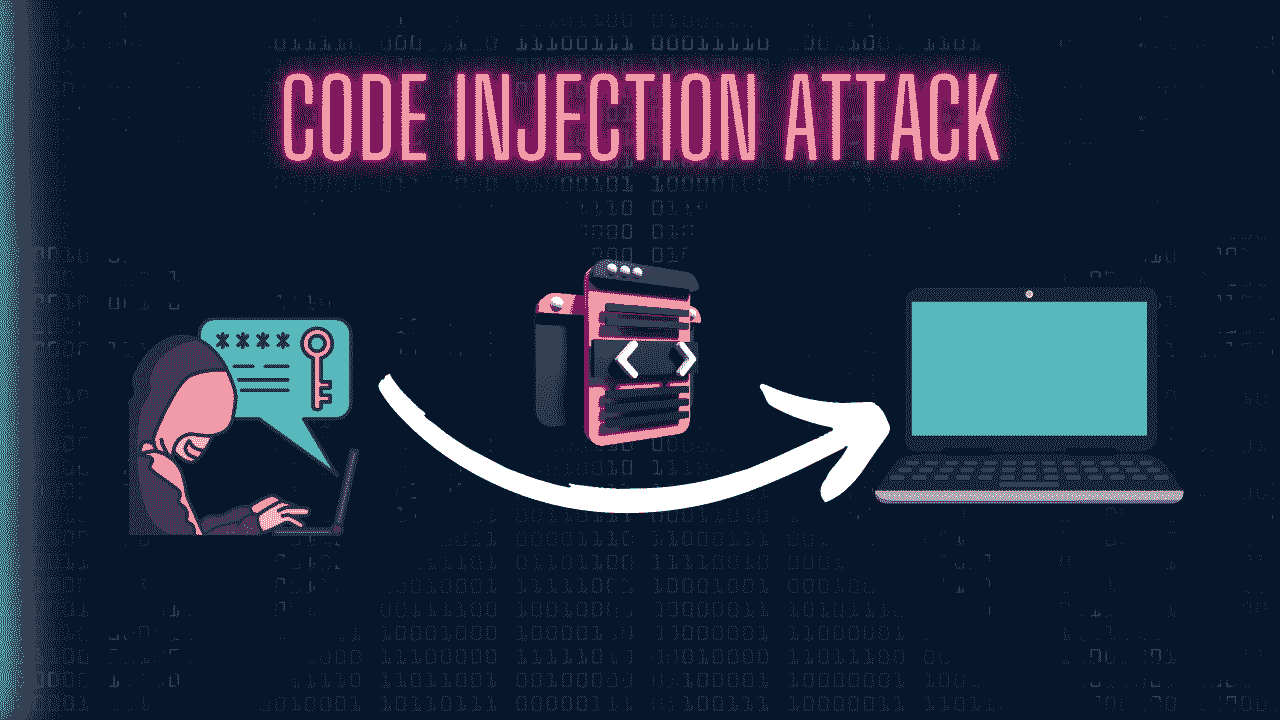In this blog, we will learn about Insufficient Logging and Monitoring which comes under OWASP 10. Basically it is handle by SOC Analyst where they identify and analyze all the logs coming on the website. Based on that the team actions on it. So let’s get started with the blog.
Table of Contents
- Introduction to Insufficient Logging and Monitoring
- Impact of Insufficient Logging and Monitoring
- Mitigate from Insufficient Logging and Monitoring
- Blogs Related to Cyber Security Attack
- Post Related to Linux
Introduction to Insufficient Logging and Monitoring
Insufficient logging and monitoring is a critical issue in the field of cybersecurity, often overlooked but with potentially severe consequences for organizations. This practice refers to the inadequate recording of security-related events and the lack of effective monitoring and alerting mechanisms in software applications or systems. In this introduction, we’ll delve into the significance of sufficient logging and monitoring, its implications, and why addressing this issue is crucial for maintaining a robust cybersecurity posture.
Importance of Logging and Monitoring:
- Threat Detection: Logging records the activities and events within your applications and systems. Proper monitoring of these logs helps in detecting unauthorized access attempts, potential attacks, and suspicious behaviors.
- Incident Response: In the event of a security breach or cyberattack, logs become invaluable for investigating the attack, identifying the entry point, and understanding the extent of the compromise.
- Compliance and Auditing: Many industries and regulations require organizations to maintain detailed logs of certain activities. Proper logging and monitoring help meet compliance requirements and facilitate audits.
- Forensics and Analysis: Logs provide a historical record of events, which is essential for post-incident analysis, root cause identification, and preventing similar incidents in the future.
- Timely Action: Effective monitoring ensures that security teams receive alerts promptly when unusual or malicious activities occur, enabling them to respond quickly and mitigate potential damage.
Impact of Insufficient Logging and Monitoring
Insufficient logging and monitoring can have far-reaching and significant impacts on an organization’s cybersecurity and overall operational integrity. This practice leaves organizations blind to potential security threats and compromises their ability to detect, respond to, and recover from various incidents. Here are some of the key impacts of insufficient logging and monitoring:
A) Delayed Detection of Security Incidents:
Without proper monitoring, security breaches, unauthorized access, and other malicious activities can go undetected for extended periods. Attackers can exploit this gap to exfiltrate data, compromise systems, and establish a persistent presence within the network.
B) Ineffective Incident Response:
When security incidents do occur, the lack of detailed logs makes it difficult to conduct effective incident response and forensic analysis. This can prolong the time it takes to contain and mitigate the impact of an incident.
C) Limited Visibility:
Insufficient logging restricts the visibility into user and system activities. This hinders the ability to identify patterns, anomalies, or deviations from normal behavior that could indicate a security breach.
D) Inaccurate Root Cause Analysis:
When investigating security incidents, inadequate logs make it challenging to accurately determine the root cause and the initial point of entry for attackers. This can result in incomplete remediation efforts.
E) Loss of Evidence:
Detailed logs are essential for preserving evidence in the event of a security breach. Insufficient logging may lead to the loss of critical information needed for legal and regulatory purposes.
F) Unidentified Insider Threats:
Without proper monitoring, insider threats from employees, contractors, or partners can go unnoticed, allowing malicious actors to exploit their access to systems and data.
G) Lack of Accountability:
Proper monitoring holds individuals accountable for their actions within the system. Insufficient monitoring can lead to a lack of accountability and a permissive environment for unauthorized actions.
To mitigate these impacts, organizations should prioritize establishing robust logging practices, implementing real-time monitoring and alerting mechanisms, and developing a comprehensive incident response plan. By doing so, organizations can enhance their ability to detect, respond to, and recover from security incidents, thereby safeguarding their assets, data, and reputation.
Mitigate from Insufficient Logging and Monitoring
Mitigating the risks of insufficient logging and monitoring requires a systematic and proactive approach to enhancing the visibility and security of your systems. Here’s a step-by-step guide to help you mitigate the impacts of this issue:
- Identify Critical Assets and Data:
- Determine the most critical assets, systems, and data that need to be monitored to ensure effective security.
- Implement Comprehensive Logging:
- Define a logging strategy that includes capturing relevant security-related events, user activities, authentication attempts, and system changes.
- Log both successful and failed events to provide a complete picture of system activities.
- Centralize Log Management:
- Set up a centralized log management system to aggregate logs from different sources, making it easier to analyze and correlate events.
- Real-time Monitoring:
- Implement real-time monitoring and alerting mechanisms to promptly detect and respond to unusual or suspicious activities.
- Configure alerts for specific events that may indicate a security incident.
- Automated Responses:
- Integrate automated responses into your monitoring system to trigger actions based on predefined rules. For example, you could automatically block IP addresses after detecting multiple failed login attempts.
- Regular Log Analysis:
- Designate a team or individual responsible for regularly reviewing and analyzing logs for potential security threats and anomalies.
- Establish a schedule for log analysis and follow up on any identified issues.
- Incident Response Plan:
- Develop a well-defined incident response plan that outlines the steps to take in the event of a security incident.
- Clearly define roles and responsibilities for different team members during incident response.
- Forensic Readiness:
- Ensure that logs are retained for an appropriate period to support post-incident forensic analysis.
- Regularly test the effectiveness of your logs for forensic purposes.
- Employee Training:
- Provide training to your staff on the importance of logging, monitoring, and recognizing signs of security incidents.
- Educate employees about their role in reporting unusual activities or incidents.
- Continuous Improvement:
- Continuously review and update your logging and monitoring strategy based on lessons learned from incidents and changes in the threat landscape.
- Stay informed about emerging threats and adjust your monitoring approach accordingly.
- Penetration Testing and Red Teaming:
- Conduct regular penetration testing and red team exercises to simulate real-world attacks and identify gaps in your logging and monitoring defenses.
- Compliance and Auditing:
- Regularly audit your logging and monitoring practices to ensure compliance with industry regulations and internal security policies.
By following these steps and consistently applying best practices for logging and monitoring, you can significantly mitigate the risks associated with insufficient logging and monitoring. This proactive approach will enhance your organization’s ability to detect, respond to, and recover from security incidents, ultimately strengthening your overall cybersecurity posture.
Blogs Related to Cyber Security Attack
- 10 Tips for the User to Prevent from Being Hacked by Hackers
- Cookie Hijacking, How to Detect and Prevent It with Practicals
- Session Hijacking, and How to Detect and Prevent It with Practicals
- Social Engineering and its Different Types in CyberSecurity
- What is Privilege Escalation Attack, its Types, and Prevention
- KeyLogger Attack and How to Detect and Prevent It
- Eavesdropping Attack and How to Prevent it in Ethical Hacking
- Drive-By Attack and How to Prevent it in Ethical Hacking
- Steganography Attack and How to Hide and Send Data in Image
- What is SQL Injection, its Type, Prevention, and how to perform it
- Broken Access Control Full Guide OWASP 10 in Ethical Hacking
- Insecure Deserialization in Ethical Hacking OWASP 10
- Host Header Injection | How to Attack the Header of a Request
- Email Header Injection | How to Send an Email to an Unknown Person
- DOS Attack (Denial of Service) and Prevent or mitigate with it
- Sensitive Data Exposure Vulnerability OWASP10 in Ethical Hacking
- LDAP Injection and What are the Impact and Mitigation of LDAP
- OS Command Injection Attack, Prevent and Detect with Examples
- Code Injection Attack | How to inject the code into the website
- XPath Injection and What are the Impact and Mitigation of XPath Injection
- CRLF Injection and What are the Impact and Mitigation of CRLF Injection
- XML Attack or XML External Entities (XXE) and How to Detect and Prevent it
- Cross Site Scripting or XSS Attack | How to Detect and prevent from XSS Attack
- Using Components with Known Vulnerabilities Full Guide OWASP
Post Related to Linux
- What is Linux Operating System | Introduction to Linux
- Directory in Linux Define | Linux Directory & its Commands
- Explain the chmod command in Linux | Linux chmod command
- Linux User Management || User Management in Linux
- Linux Computer Network Advanced Command | Network Command
- Redirection in Linux I/O| Linux I/O Redirection
- CronTab and Job Scheduling in Linux | Make CronTab Project
- Linux Firewall Unlock Rules with Firewall-cmd Tutorial
- netstat command in Linux | Linux netstat command
- SSH Command Full Guide with Practical | Linux SSH Service
- awk command Guide | How to arrange the output of the file in Linux
- sed command Full Guide Tutorial | Linux sed Command
- Iptables commands Full Guide: How to make our own Firewall




